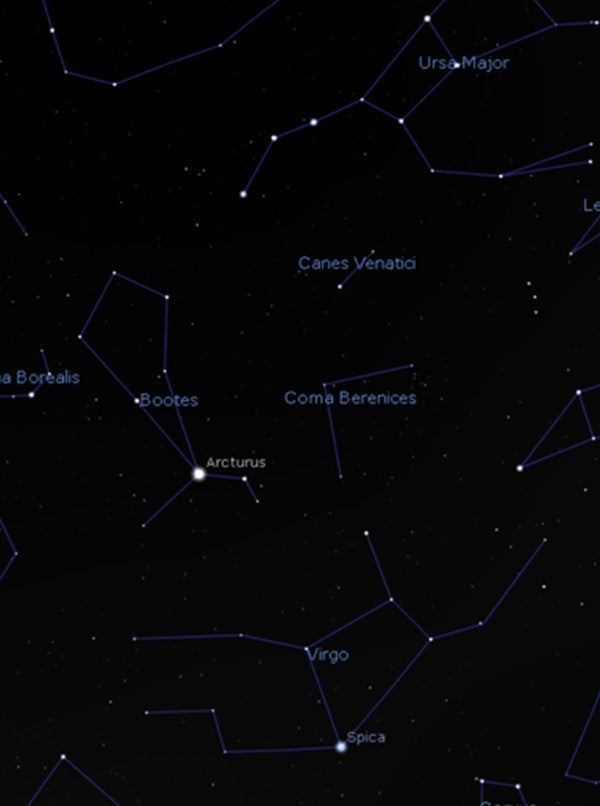 There are a host of things to look out for in the night sky this month, and team at Armagh Observatory and Planetarium has shared a calendar of events to keep amateur stargazers looking to the heavens throughout May.
There are a host of things to look out for in the night sky this month, and team at Armagh Observatory and Planetarium has shared a calendar of events to keep amateur stargazers looking to the heavens throughout May.
Arcturus in the constellation of Boötes
Turning our attention to the stars. We can use the Plough, seven stars which are part of the Ursa Major constellation, to locate our first bright star in the constellation of Boötes, pronounced boo-oh-tes (meaning herdsman). Simply imagine extending the curve of the Plough’s handle downwards until you come to a brilliant ‘orange’ star. This star is called Arcturus, so remember that you have to “arc to Arcturus”.
When you join up all the stars in Boötes it resembles a kite flying in the night sky! Arcturus is a red giant star and the fourth brightest star in the night sky making it very easy to identify.
Arcturus was thought to be like our Sun but has now passed the main sequence period of its lifespan, instead of fusing hydrogen, like our sun, Arctutus is now fusing helium in its core, causing it to expand.
The Whirlpool Galaxy
Moving across the sky we come to the constellation of Canes Venatici, who are known as Boötes’ hunting dogs. Although not very well known and only made up of two stars, within Canis Venatici you can find M51 or the Whirlpool Galaxy.
In 1845 Irish astronomer William Parsons, while using the 72-inch reflecting telescope at Birr Castle Co Offlay, was the first to discover the spiral nature of this “nebulae”. At the time he had been working with Armagh Observatory Director, Romney Robinson. It was not until the 1920’s that astronomers understood that these “spiral nebulae” were actually distant galaxies.
So, not only does the Whirlpool Galaxy have a link to Ireland, but it was also the very first spiral galaxy to be identified.
Spica in the constellation of Virgo the Maiden
Coming back to Arcturus once more, imagine drawing a straight line downwards to help us find a brilliant blue-white star.
This star is called Spica, so remember you have to “spike to Spica”. Spica is found in the constellation of Virgo the Maiden who represents the Goddess of Corn and Agriculture and although not made up of many bright stars, Virgo makes up for it in galaxies.
Look towards the upper region of the ‘bowl’ of the Y shape in the constellation of Virgo and here is a great place to find galaxies.
This is where you will find the Virgo Cluster, there are approximately 2000 galaxies in this cluster and astronomers estimate that it covers a total volume of space with a diameter of 15 million light-years across. Although for the best viewing you will need a good telescope to spot these amazing structures.
The Flower Moon
At the end of the May we are also treated to a full moon, known as the Flower Moon. In many cultures it is referred to as the Flower Moon thanks to the abundance of blooming flowers in spring.
This full moon, however, is not your average full moon but a ‘supermoon’ meaning that it will appear a little brighter and larger in the sky than normal. This happens when the full moon coincides with the moon’s closest approach to earth in its orbit.
To keep up to date with everything that is going on at Armagh Observatory and Planetarium visit their new website at www.armagh.space



